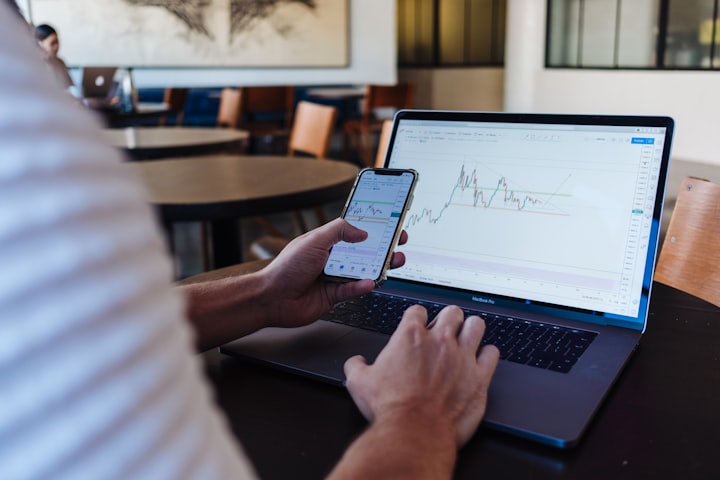
Being named every day trader, swing trader or position trader is two badges of honor plus a title. The vast majority of traders entering the scope happen through these gateways. As far as the e-book they are studying or the expert they are currently pursuing, the trader can really feel like they belong.
The problem with being a "time specialist" is usually that it's holding you back again. While any period of time can make you money, you will find instances where the market dictates which time is best. By not listening to the market and insisting on alternately buying and selling in the chosen time frame, you are missing out on income opportunities and limiting your good performance.
The market would be a good dictator of your time body decisions. Ignoring market rhythms means always ensuring that your income is hard to fall and cutting your losses as needed. If you remain an expert on time frames, this can limit your ability to control your losses. Several loss methods that are used on one time frame can be used on another time frame if the trader is ready to go beyond his horizon.
Nowadays, you can find several classic types of time frames that most traders fall into: day, swing, and posture. No time frame fits the other. They each have their own personal pros and negatives. The secret to staying pro in thriving trading is to move smoothly from one time frame to the next (if that makes sense) and know when it makes sense to try it.
day trader
Investopedia defines a business day trader as “a stock trader who holds positions for very short periods of time (minutes to hours) and makes many trades each day. Most trades open and close within the same day.”
The title may be a day trader, scalper, or energy trader, but the process is precise. You trade intraday to be able to reach your financial gain targets while using the explicit goal of staying the same with your investment at the end of the business day.
Whether you're trying to make a few hundred dollars or maybe hundreds, the practice is to pick a few small odds each day without putting your capital at risk. Decreasing the amount you're aiming for, whether it's a couple of factors around the Emini S&P or a couple hundredths of a cent buying and selling a currency, you always believe you're risking less and therefore will have a lot more longevity than swing traders or traders on place.

At first glance, this logic is correct. Problems arise when the industry moves significantly against you when you least expect it, or when slippage occurs, or when there is a spread associated with the quoted bid and ask price. Any of these three situations can reduce the amount of what you can create and, in time, the amount you will lose.
Combine this with the trader's need to be right about the markets, not to make a profit, and you have what might well be described as a slow death. Every day a trader earns a little, but loses more. Over time, he finds that the value of his account slowly drops until eventually he either has no more money left to invest or fails to make any headway.
At the end of the day, leaving a trader's day is due to two things: time and commissions. Since intraday trading is supposed to save you money in a shorter period of time, it instead requires more of your time to monitor, prepare and participate. For those who just want to earn a little extra dollars, or for those who want to supplement their pension, the obligation can far exceed the reward. Spending 10 to 12 hours a day working in the markets gives you mental stimulation and any retirement can become a chore.
The second failure of the day trader has to do with commissions. Now even E*TRADE has jumped the bandwagon and joined the futures revolution by offering 99 cent commissions. Commission rates are playing in limbo around the world to actively recruit futures and forex traders. The problem is, no matter how low they sink, they will always beat the client. You should think of a commodity house like a betting shop. No matter which side the client is on, long or limited, no matter if he wins or loses, the brokerage company will receive income. And the industry's dirty little key could be the fact that the lower the fees, the more clients will trade.
Like everything in life, if you think you're buying something regularly, you're just buying more. This is how Costco and Sam's Club work. These two companies consistently generate record revenues. There is no significant difference between how these outlets generate business and invest. The perceived discount in buying and selling encourages traders to trade more. Does this mean that there is less slippage or that the industry is less likely to go against you? Not! Not only did your risks stay exactly the same, you increased your exposure to them simply because it seemed cheaper to you to try and do it.
Among the most influential studies on "Do individual day traders make money?" (Brad M. Barber et al., 2004) has seriously studied the phenomenon of trading on working days, analyzing 130,000 investor accounts. Their thesis contained some simple conclusions, one of which was certainly: “Day traders bring in gross income, but their income is not enough to cover transaction costs.” This is a disturbing revelation. If you are exclusively a day trader, you will not be working for yourself: you are working for a brokerage company.
swing trader
Investopedia defines a swing trader as "a buying and selling style that attempts to profit from stocks within one to four days."
The level of research that has been done on weekday investing is simply not suitable for swing investing. Time frame flexibility means that a trader can hold a trade to gain a few days or a few weeks, depending on the end goal.
Like their day investing counterparts, swing traders try to make a few hundred dollars or more and also try to limit their exposure to the markets by reducing the amount of time spent trading. There is definitely an assumption that an industry moves in a certain direction, whether it goes up or down, only for a limited period of time before it pulls back or pulls back again.
The role of the swing trader is essentially to choose as soon as the shift starts and exit in time when the transfer ends. This ability is akin to retaining the ability to pick market highs and lows. The swing trader wants to know if the market is going to explode based on fundamental or technical information, as well as the amount of profit he can make despite the fact that he is moving.
This is an almost impossible task. Many swing traders tend to be system or black box traders. They make sure that the market is framed as a black-and-white "in here and out" scenario. The problem with this style of trading is that its predictive nature can lead to a lot of false entries and exits. You can be fooled by false entries or exit trades too early, losing all your profits while chasing the markets to catch that last small shift.
If it were possible to predict the behavior of a sector in a certain way, then there would be no need for books, videos, and seminars on trading. We would do better to learn how to use tarot or astrological cards. The markets are actually a microcosm of human psychology combined with insider buying and selling.
With all the limited knowledge available to the retail trader, it is difficult to pick absolute highs and absolute lows. When trying to trade these options, there is a significant need for risk management, rather than money management, to be able to protect yourself from the unknown.
The weakness of most of your swing buying and selling will be the belief that a stop loss or risk of just 2% is sufficient risk management. This couldn't be further from the truth. Although swing investing is less demanding in real time in front of your investment screen, it takes a lot of preparation time to determine entry, financial benefit, and exit from the decline. This preparation time is necessary in order to establish a deal and forget about it. Lack of time to prepare, along with an insufficient risk plan, causes many swing traders to give up.
Place a trader
A position trader (trend trader) is defined as "a trader who attempts to profit by analyzing the momentum of an asset in a particular direction." Usually, these field traders are looking to make big money regardless of daily fluctuations. It's like buying and holding shares. It is believed that you will find only two ways to make dollars in the markets: either you can afford to generate fast sniper attacks, or you catch the trend at the beginning and hold on.
There is a reasonable logic to wanting to be a situation trader, especially in the current bull market in commodities. The euro rose from 0.89 cents to $1.50. If you were to trade a euro futures contract, you would make $76,250; if you had held the euro spot trade, you would have made $61,000. Exactly the same thing happened with crude oil. The price of crude oil fell from $12 a barrel to over $100 a barrel. A position trader catching all of this transfer would have made $88,000.
Buying and selling in a pose can bring wonderful rewards, as the examples above can show. The main problem with investing is that it is only in 20/20 hindsight that we can see the actual outcome of buying and holding. During wild fluctuations in market movements, it becomes difficult to maintain conviction. Long or short, positional investing can be nerve-wracking at times.
Rarely does a sector just move straight up or straight down. The peaks and troughs along the way give the illusion that the trend has stopped or the shift is reversing, only to suddenly resume it. When at first glance these moves cannot amount to much more than a few percentage points here and there, margin leverage makes it difficult to hold trades for long periods of time. For example, if you are trading the market with 10 to 1 leverage, a 4% uptrend against you could be equivalent to a 40% downtrend.
What trader would willingly give up a 40 percent profit to earn just 10 percent? No one in their right mind, but this is something that is asked over and over again by the local merchant. Without understanding when the particular market they are trading reached its plateau, the posting trader must be willing to give up what they have in order to gain more. This simple fact helps humble retail traders be mentally and financially prepared to properly hold trades for the long haul, even if they know the market is going to move in the direction they expect.
About the Creator
Eful
Hi there, I am Syaefullah Nur from Indonesia. I am reader and now I try to providing my best articles for you guys. Enjoy it;)






Comments
There are no comments for this story
Be the first to respond and start the conversation.